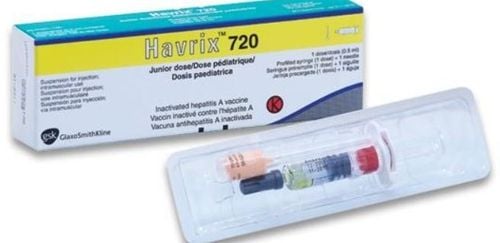This is an automatically translated article.
Philorpa medicine has the main ingredient L - Ornithine - L - Aspartate, which is indicated in the treatment of severe liver diseases. The drug is available in both injectable and oral forms, and the patient will be prescribed the appropriate dosage form depending on the medical condition.1. Uses of Philorpa
The drug has the main ingredient L - Ornithine - L - Aspartate, indicated in the treatment/detoxification of severe liver diseases such as:
Hepatitis; Cirrhosis ; Sequelae of hepatitis; Damage to liver parenchyma. L - Ornithine - L - Aspartate is a combination of two important endogenous amino acids L - Ornithine and L - Aspartate. In particular, L - Ornithine is a substrate of the urea cycle, converting toxic ammonia into non-toxic urea and excreted by the kidneys, supporting the liver to perform normal detoxification functions. Thanks to this process, the amount of ammonia in the blood decreases. L - Aspartate is an essential component of the acid cycle and thus helps to regenerate damaged liver cells.
2. How to use Philorpa
Philorpa is available in pill and injectable form. The recommended dose of Philorpa injection is 1 g L - ornithin - L - aspartate/day (2 ampoules/day) for the first week and can be used for 3-4 weeks. Patients can change between oral or injectable every other week (alternating: 1 week for injection, 1 week for philorpa tablets with a dose of 3g x 1-3 times/day). Dosage is adjusted according to the severity of the disease. Your doctor may prescribe a higher dose in some cases. When high doses are used, serum and urine urea concentrations should be monitored for appropriate adjustment.
Philorpa should not be used in patients with severe renal impairment. Patients should note the above dosage for reference only. Specific dosage may vary depending on the condition and severity of the disease. It is best for patients to consult a medical professional to get the right dose.
3. What are the side effects of Philorpa?
When using Philorpa, patients may experience undesirable effects (ADRs) as follows:
Appears a burning sensation in the larynx; Nausea; If the injection form is used, there may be reactions at the injection site. When experiencing undesirable effects of the drug, the patient should stop using the drug and notify the doctor or go to the medical facility for treatment.
4. Notes when using Philorpa
When using Philorpa, patients should note the following:
Before using the drug, the patient should carefully read the instruction leaflet and it is best to consult a doctor or pharmacist. Philorpa is contraindicated in the following cases: Hypersensitivity to any ingredient of the drug or patients with severe renal impairment. When using Philorpa for patients with impaired liver function, it is necessary to control the injection rate to limit discomfort and nausea. The risk of anaphylaxis should be borne in mind when using injectable drugs. Use Philorpa with caution in the elderly and children. Pregnancy: Not much is known about the safety of the drug in pregnant women. Therefore, this drug should only be used during pregnancy when the potential benefits and risks to mother and baby have been weighed. Breast-feeding: There are no studies on the safety of use in nursing women. Therefore, this drug should be used in lactating women only if clearly needed, after weighing the potential benefits and risks. In summary, Philorpa medicine contains important amino acids, which help support the treatment of liver diseases. Patients should carefully read the instructions for use and consult a medical professional before use.
Please dial HOTLINE for more information or register for an appointment HERE. Download MyVinmec app to make appointments faster and to manage your bookings easily.













